One of the coolest things Friend Shari and I got to see – and hear – when we were given courthouse tours by IT director Eric McGowen and public works director Don McQuay was the clock that lives in the dome of the Jackson Courthouse.
The outside view is pretty neat (even though a Dec. 17, 1934, Missourian story said that the workmen had to remove the dial on the south side of the courthouse to repaint the numerals because they had faded to the point where they were unreadable).
Tick Tock Tick Tock
The sound of the ancient mechanism ticking away is relaxing. Here’s a short video that shows what it looks and sounds like.
Concessions to modern times
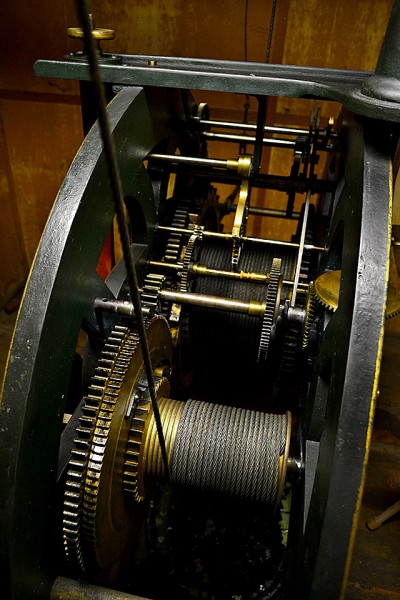 There have been two changes in modern times. The clock was originally wound by hand. Now it’s done by an electric motor. At one time, the clock struck the time on a huge bell in the tower. The huge tolling hammer is still there (you’ll see if when I do the next story on the courthouse), and there’s a cable running up to the clock, but it looked disconnected.
There have been two changes in modern times. The clock was originally wound by hand. Now it’s done by an electric motor. At one time, the clock struck the time on a huge bell in the tower. The huge tolling hammer is still there (you’ll see if when I do the next story on the courthouse), and there’s a cable running up to the clock, but it looked disconnected.
Earlier stories about the Courthouse
- The history of the courthouse
- World War I Memorial
- Aerial photos of the courthouse
- Jackson’s Hanging Tree
- Miss Missouri visits the courthouse
Photo gallery of courthouse clock
Click on any photo to make it larger, then click on the left or right side of the image to move through the gallery.


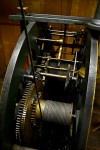
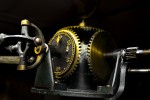
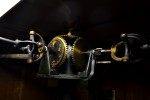
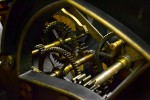

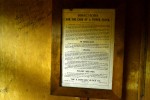


My dad has been the long-time courthouse clock maintenance and repair guy. Not sure if he’s still doing it, but I’ve spent many hours up there as a kid when he was figuring out why the chime wouldn’t strike at the proper time, etc.
I could see from the log that it’s a constant battle to keep it on time.
There was a plaque on the wall in the clock tower that read
In Memory
of
Robert H. Daugherty
Our Friend
Who Maintained
The Clock
From 1977 until Nov. 10, 1991
Yes, Mr. Daugherty was the one who taught my dad, Scott McDowell, how to maintain it. The clock usually speeds up in the summer and slows in the winter due to the cold weather increasing the viscosity of the grease on the gears and bearings, slowing them down. It is still a fully mechanical clock with the original movement, but it was equipped with an electric winding system to eliminate the need to wind it with a crank every day or few.
Just notice that the handwritten log is is in his handwriting… I suppose he’s still at it.